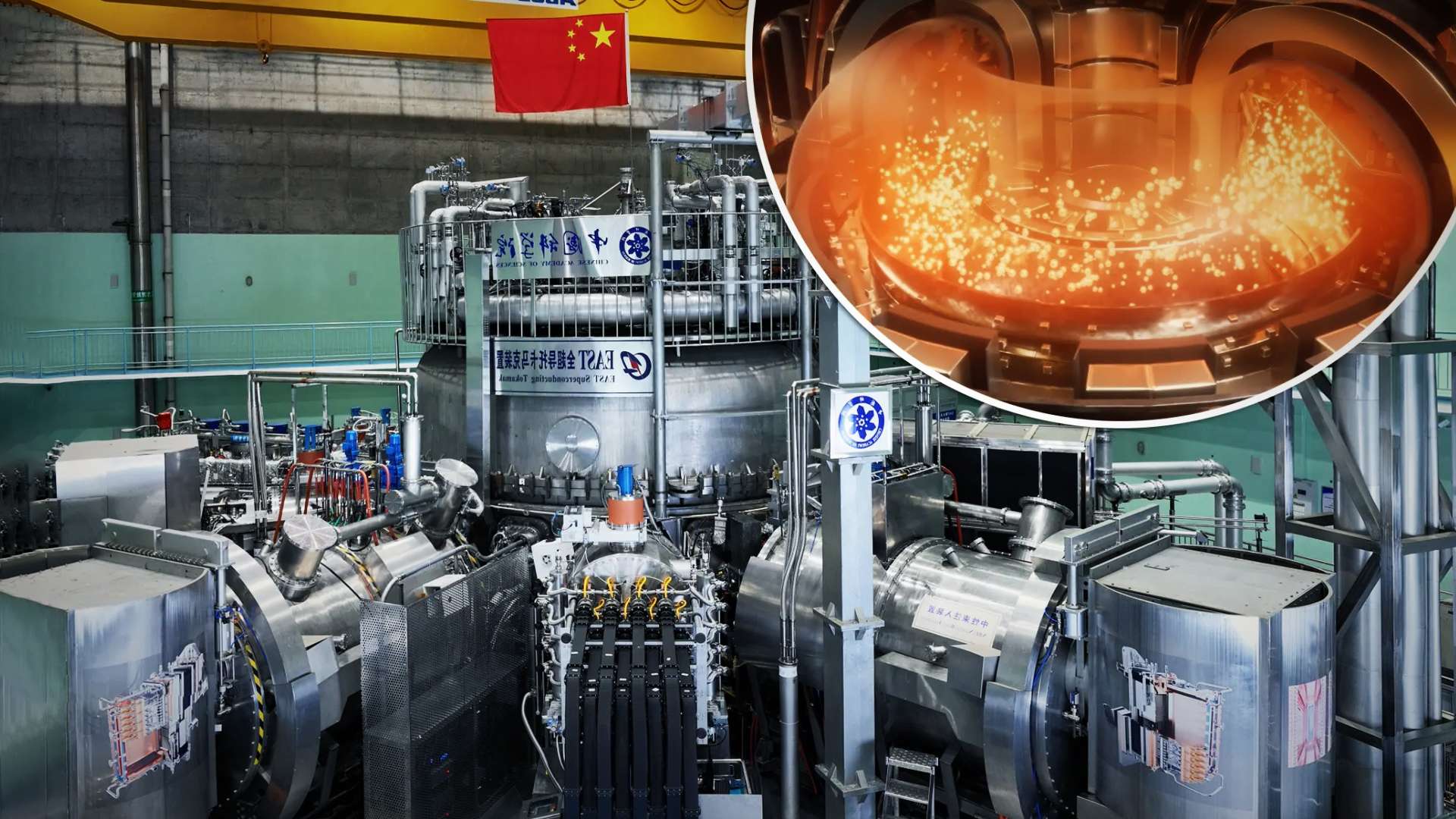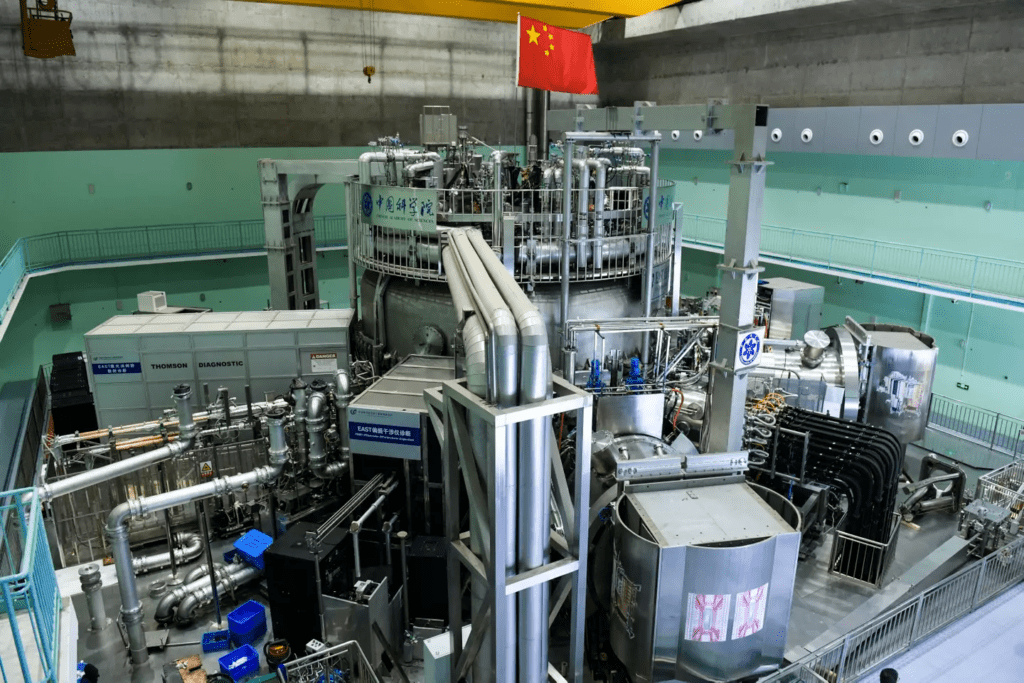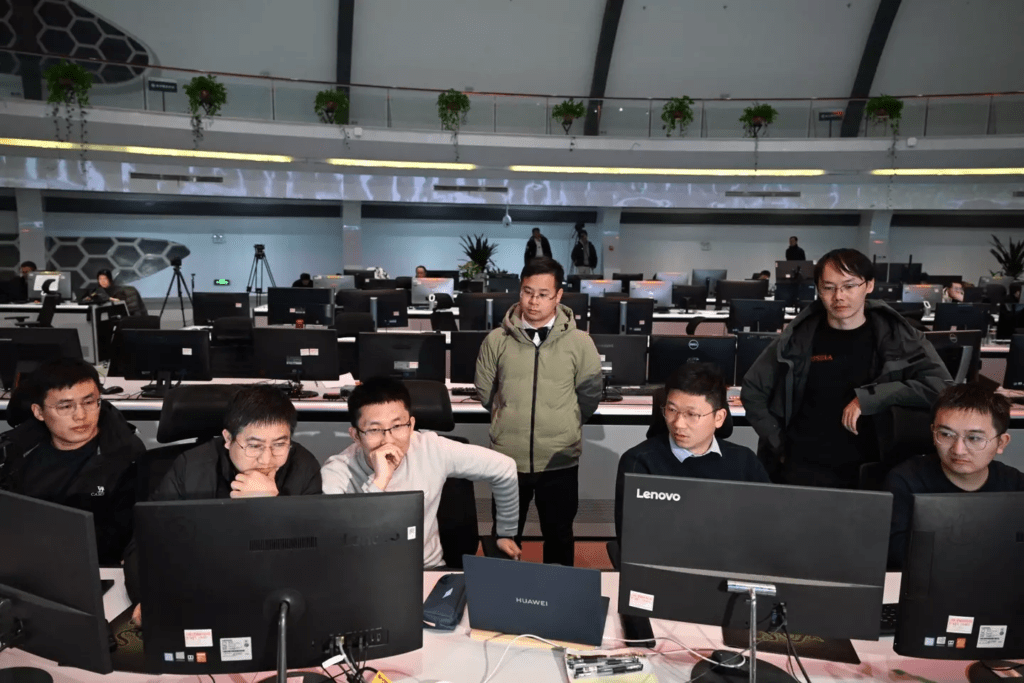China’s “Artificial Sun” Breaks World Record: The Future of Clean Energy

Introduction: The Dawn of Unlimited Clean Energy
In a ground-breaking achievement, China has set a new world record with its “artificial sun”—an advanced nuclear fusion reactor that managed to sustain a temperature of 100,000,000 degrees Celsius for 17 minutes. This remarkable feat not only showcases China’s strides in the energy sector but also brings the world one step closer to unlocking the potential of limitless, clean, and renewable energy.
This milestone in nuclear fusion represents a turning point in the global pursuit of clean energy solutions, and the success of China’s artificial sun is capturing the attention of scientists, energy experts, and the general public alike. With the looming challenges of climate change and dwindling fossil fuel resources, this achievement sparks hope for a cleaner, more sustainable future.
In this article, we’ll take a deeper look at how this experiment works, its significance, and how it could change the future of energy as we know it.
What is Nuclear Fusion?
Nuclear fusion is often referred to as the “holy grail” of clean energy. It involves merging atomic nuclei, which releases an immense amount of energy—much more than traditional methods like burning fossil fuels or nuclear fission. What makes fusion particularly attractive is that it does not generate the same harmful emissions or hazardous waste that other energy sources produce.

At the core of fusion power is the process that powers the sun itself: the merging of hydrogen atoms under extreme pressure and heat to form helium. This process releases vast amounts of energy, which in the case of the sun, is harnessed in the form of light and heat. Recreating this process here on Earth, however, has proven to be a formidable challenge.
Learn more about nuclear fusion and its potential here.
The Rise of China’s Artificial Sun: A Major Milestone
In December 2025, the Chinese Academy of Sciences (CAS) made history by achieving a significant breakthrough with their nuclear fusion reactor, known as the Experimental Advanced Superconducting Tokamak (EAST). The reactor, which is often referred to as China’s “artificial sun,” achieved an impressive feat—sustaining a temperature of 100 million degrees Celsius for 1,066 seconds, or 17 minutes.
This achievement doubles the previous record set during an earlier test when the reactor ran for only 403 seconds (just over six minutes). According to CAS, this is a critical step forward in fusion research, signalling that nuclear fusion is slowly becoming a more viable energy source.
Read more on the details of China’s EAST reactor here.
Why Is This Breakthrough So Important?
This achievement is more than just a technical success; it marks an important step toward potentially solving the world’s energy crisis. Nuclear fusion could provide a nearly infinite and clean source of power. Unlike fossil fuels, fusion does not produce harmful emissions, and unlike traditional nuclear fission, it does not leave behind dangerous nuclear waste.
Fusion energy, if mastered, could revolutionize global power generation. Some of the primary benefits include:
- Unlimited Fuel Source: Fusion uses isotopes like deuterium and tritium, which are found in abundance in water and lithium.
- Environmentally Friendly: It produces no greenhouse gases or long-lasting waste, making it one of the cleanest energy sources possible.
- Safety: There’s no risk of a catastrophic meltdown, unlike the fission reactors that power current nuclear plants.
Explore more about the potential impact of fusion energy on global sustainability here.
Social Media Buzz: How the World is Reacting to the “Artificial Sun” Breakthrough
Since the news broke, social media has been abuzz with reactions from both energy experts and the general public. People are amazed by China’s achievement, and discussions around the future of fusion energy have sparked a global conversation. Below are some of the most interesting and insightful reactions from platforms like Twitter and Facebook.
1. Twitter Reaction: “Fusion Energy is Here!”
The official Twitter account of the European Fusion Energy Programme shared an optimistic tweet celebrating China’s achievement and its potential implications for Europe’s fusion research efforts:
“China’s artificial sun is a game changer! 🌞 The future of energy is looking brighter with #FusionEnergy! Let’s work together for a sustainable future. #NuclearFusion #CleanEnergy #Innovation”
Many users jumped into the conversation, sharing their thoughts and hopes for nuclear fusion. Some pointed out that this milestone could signal the end of our reliance on fossil fuels and could shift the energy balance toward more sustainable sources.
2. Facebook Post: “Can Fusion Power the World?”
The Fusion Energy Science and Technology Facebook page posted an engaging update about the achievement, asking its followers to imagine a future powered by nuclear fusion:
“Could this be the moment we’ve been waiting for? 🔋 With China’s artificial sun sustaining temperatures higher than the core of the sun for 17 minutes, fusion energy could be closer than ever. Imagine a world with unlimited, clean energy. The future is now! 🌍 #FusionEnergy #CleanTech #Innovation”
This post sparked lively discussions, with people commenting on the potential benefits of fusion energy for both the environment and the economy. Many users shared their excitement about the idea of a cleaner world.
3. LinkedIn Discussion: “Fusion Breakthrough – A Global Opportunity”
On LinkedIn, industry professionals and energy experts have been sharing their thoughts about this new development. Dr. Lisa Monroe, an energy analyst, wrote:
“China’s success with nuclear fusion is a monumental achievement in the quest for clean energy. However, the challenge remains to make fusion power commercially viable. Collaboration between global research institutions and governments will be essential to making fusion the primary source of energy in the future. #EnergyInnovation #SustainableEnergy #GlobalCollaboration”
Many industry leaders commented on Dr. Monroe’s post, discussing the technical and financial hurdles that remain. The consensus is that while fusion energy has the potential to change the world, there is still much work to be done to scale the technology.
4. Instagram: “Energy Revolution in the Making”
On Instagram, the popular energy advocate page @CleanEnergyFuture shared a captivating infographic of the artificial sun reactor, along with a short but powerful caption:
“The sun’s power, right here on Earth! 🌞 China’s artificial sun is showing us what the future of energy could look like. With nuclear fusion, we could finally have clean, unlimited energy for all. #FusionRevolution #CleanEnergy #FutureOfEnergy #SustainableLiving”
The post garnered thousands of likes and sparked hundreds of comments, with followers expressing their excitement and speculating on what the world might look like if fusion energy becomes mainstream.
These social media posts demonstrate the excitement and interest this breakthrough has generated, both among experts and the general public. As the conversation around fusion energy grows, we can expect even more discussion on its potential and the global collaboration required to make it a reality.
Overcoming the Challenges: What’s Next?
Despite the promising results, the road to achieving practical and sustainable nuclear fusion is still fraught with challenges. One of the biggest hurdles researchers face is maintaining the high temperatures and pressure necessary for fusion to occur, while also keeping the process stable and efficient. The EAST reactor, for instance, needed to maintain an extreme temperature of 100 million degrees Celsius—seven times hotter than the core of the sun—for more than 17 minutes. That’s no easy feat.
Scientists are also working on developing materials that can withstand these extreme conditions. In the case of EAST, upgrades to the heating system were crucial to achieving the record-breaking performance. Researchers doubled the power output of the system, improving its ability to sustain plasma—a superheated state of matter that is necessary for the fusion process.
Additionally, controlling and containing the plasma, which is made up of charged particles, is another major challenge. The plasma must be kept stable within the reactor using powerful magnetic fields. Any disruption in the containment can cause the plasma to escape, halting the fusion reaction.
Despite these obstacles, the advancements made by China’s research team provide valuable insights into the development of functional nuclear fusion reactors.
Discover how scientists are overcoming the challenges of nuclear fusion here.
Global Implications: What Does This Mean for the Future?
This success has global implications. While China has taken the lead in this particular experiment, the development of fusion power is a global effort. Other countries, including the United States, the European Union, and Japan, are also making significant strides in fusion research.
The insights gained from China’s artificial sun experiment could guide other nations in their own efforts to develop sustainable fusion reactors. The knowledge gained from EAST’s upgrade and extended operating time can serve as a foundation for future breakthroughs in fusion technology. And if these innovations can be scaled up, they could dramatically change the energy landscape within the next few decades.

See the international collaboration on fusion research and its global importance here.
The Road Ahead: When Will Fusion Power Be a Reality?
While we’re not yet at the point where fusion reactors are powering entire cities, these developments bring us closer to that reality. The next steps will involve further testing, scaling up the technology, and ensuring that reactors like EAST can operate stably for longer periods of time and at higher efficiencies.
Experts suggest that, with continued research and investment, nuclear fusion could begin to play a role in the global energy mix within the next 20 to 30 years. While it’s still early in the development process, the potential of fusion energy to transform the way we power our world is undeniable.
Join the conversation about the future of energy on social media here.
Conclusion: A New Era of Clean Energy
As China continues to push the boundaries of nuclear fusion research, the world is watching closely. The breakthrough with the artificial sun reactor is a monumental step toward realizing the dream of unlimited, clean energy. With no emissions, no waste, and no risk of catastrophic accidents, fusion energy promises to be the power source of the future.
If scientists can overcome the remaining hurdles and refine this technology, we could soon live in a world where energy is both abundant and sustainable, changing the way we live, work, and interact with our planet.
It’s an exciting time in energy research, and one that could reshape our future in ways we can only begin to imagine.
Featured Image Credit: Getty Images/STR






